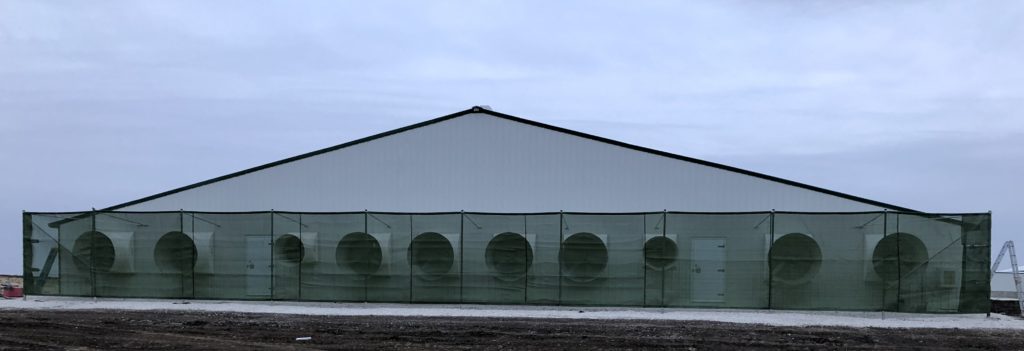There is no doubt that poultry houses have high concentrations of agricultural dust inside. According to a recent article in World Poultry.net, much of the dust in poultry barns comes from the litter and manure, down feathers, mineral crystals in urine, and feed. The article, Chickens: Negative air ionisation strongly decreases fine dust, goes on to explain how the concentration of dust inside poultry houses is directly related to the activity of the birds during light periods, especially in litter housing systems like floor housing for broilers and layers, and aviary housing for layers.
Dust is PM – Particulate Matter
High concentrations of dust are often referred to as “Particulate Matter” or PM. The concentration of PM is measured in terms of their size in diameter in micrometers. According to the EPA, the size of dust particles is directly linked to their potential for causing health problems.
PM 10
Dust or particulate matter with a size smaller than or equal to 10 micrometer in diameter, but larger then 2.5 micrometers in diameter, are often referred to as “inhalable coarse particles.” This particulate matter can be found near roadways and dusty industries, but also in some livestock barns.
PM 2.5
Very fine dust fraction or particulate matter below 2.5 micrometers are often referred to as “fine particles,” such as those emitted from forest fires, automobiles, and some agricultural settings. Particulate matter of 2.5 or smaller are able to pass the nose, mouth and larynx, penetrate into the thorax and some even into the lung tissues, causing adverse respiratory and cardiovascular health effects.
How to Remove Dust from Barns
Agricultural research teams have been working on developing technology for the reduction of dust exposure in poultry facilities. One such technology is EPI Air, which uses electrostatic particle ionization to emit electrons that charge dust particles that are in the air. The negatively charged particles then collect on the grounded surfaces in the barn, which is cleaned like normal after the growing cycle is complete. Studies by Murphy-Brown have shown significant reduction in particulate matter (57.7% reduction of 10-micron size, 47.4% reduction of 2.5 micron size, 43.1% reduction of .05 micron size) as well as a variety of production gains.
Contact Baumgartner Environics today to learn more about removing agricultural dust with EPI Air.

